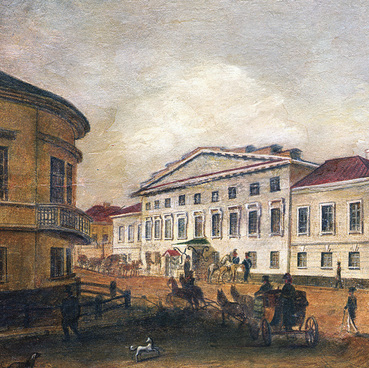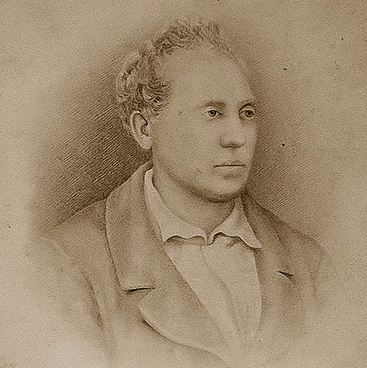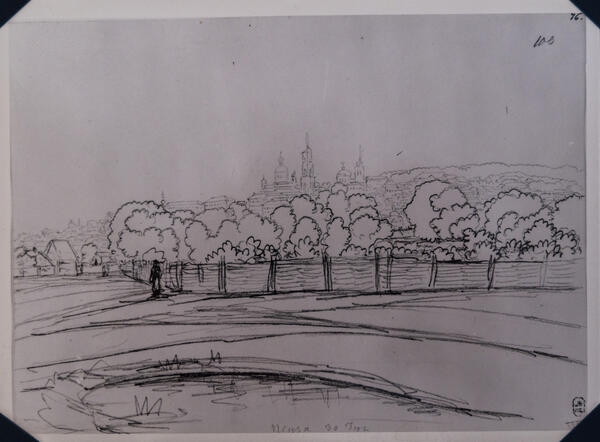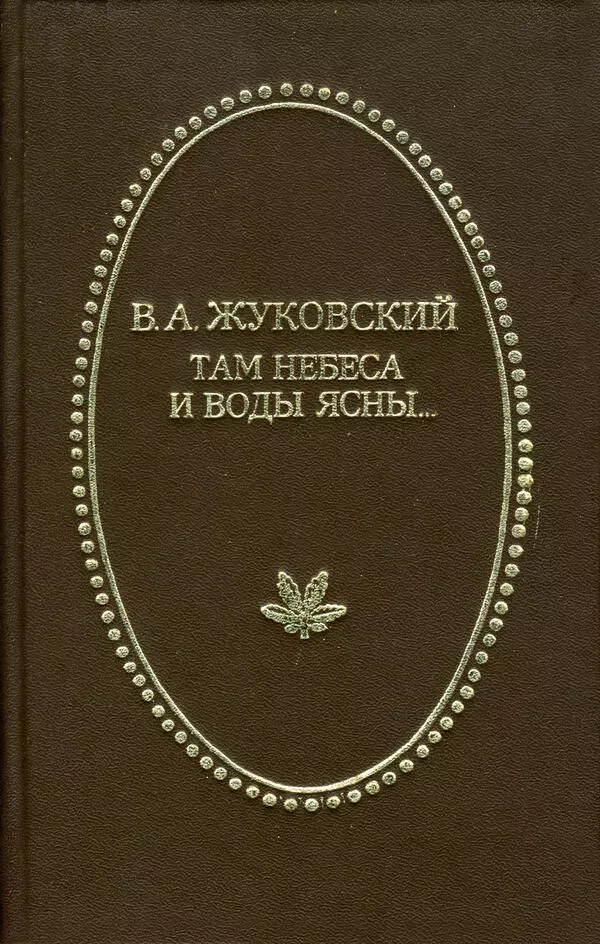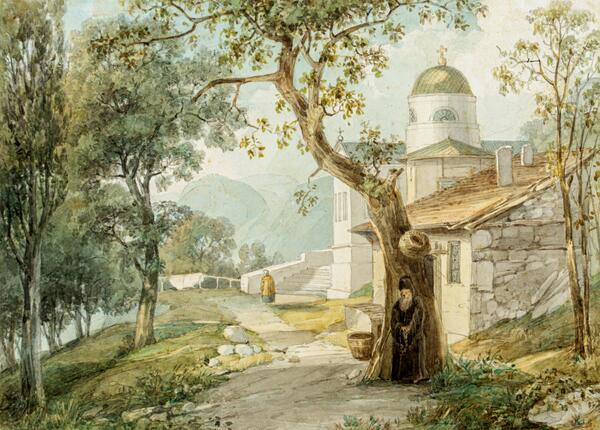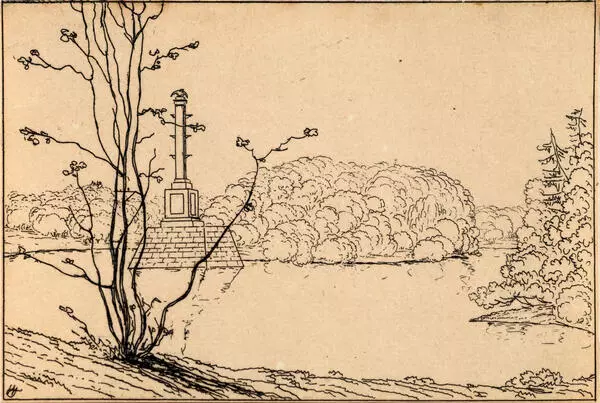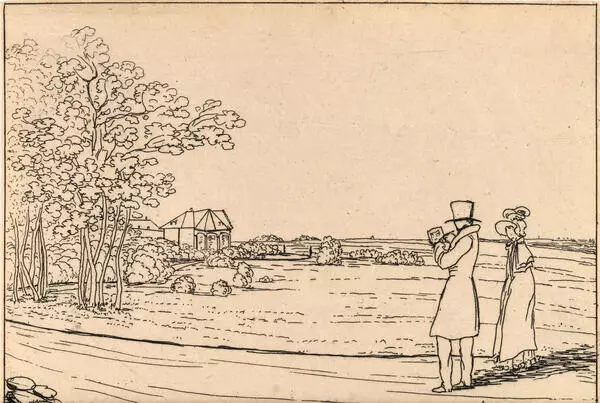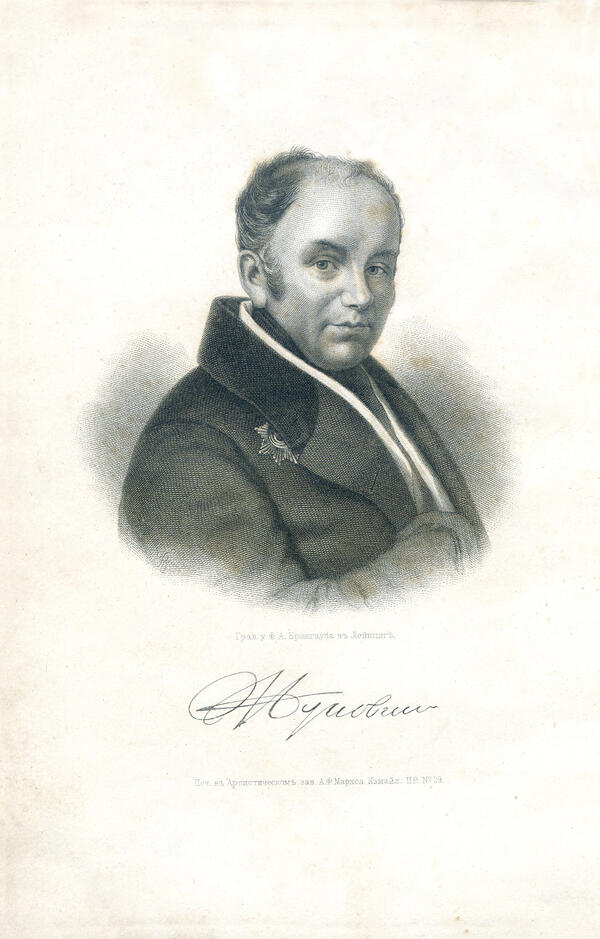Vasiliy Zhukovskiy was one of the first poets to notice Yevgeny Boratynskiy’s talent. He wrote: “He is a poet! And his talent… is the pure fire of a noble soul: with beautiful, harmonic verses does he express its beautiful feelings.”.
Zhukovskiy also had a passion for drawing, engraving and painting. Famous scientist-philologist Alexander Veselovsky wrote: “Zhukovskiy-poet cannot be imagined without a pencil. Wherever he was, wherever he appeared, he would take out his pencil and draw”. Zhukovskiy himself said that for him paintings and poetry are sisters.
Zhukovskiy’s body of work includes approximately 2,000 works. Most of them are travel albums with many drawings made with a pencil or ink. But there are also works of print and book graphics, works done in watercolors and gouache, and several paintings. As a rule, Zhukovskiy painted panoramic landscapes with city views, mountainous and rural landscapes, various architectural monuments, which he was acquainted with during numerous travels in Europe and Russia.
One of the prominent places in Zhukovskiy’s artistic heritage are the views of the suburbs of Petersburg. Several albums and separate sheets with views of Peterhof, Tsarskoye Selo, Gatchina, Pavlovsk were published. Turning to such subjects was a serious step for Zhukovskiy the painter, who had previously painted mostly panoramic landscapes of vast expanses. In new works depiction of various architectural monuments comes to the fore.
This work from the collection of the Boratynskiy Museum of was made in the technique of the calligraphic etching, which Zhukovskiy took a liking to in 1816. The eight etchings by Zhukovskiy, made in the early 1820s, are dedicated to the views of Tsarskoye Selo. The “Ruin Tower” etching depicts the monument dedicated to the Russo-Turkish War of 1768-1774, symbolizing the defeat of the Ottoman Empire. The monument was designed by architect Yuri Felten in 1771.
Zhukovskiy also had a passion for drawing, engraving and painting. Famous scientist-philologist Alexander Veselovsky wrote: “Zhukovskiy-poet cannot be imagined without a pencil. Wherever he was, wherever he appeared, he would take out his pencil and draw”. Zhukovskiy himself said that for him paintings and poetry are sisters.
Zhukovskiy’s body of work includes approximately 2,000 works. Most of them are travel albums with many drawings made with a pencil or ink. But there are also works of print and book graphics, works done in watercolors and gouache, and several paintings. As a rule, Zhukovskiy painted panoramic landscapes with city views, mountainous and rural landscapes, various architectural monuments, which he was acquainted with during numerous travels in Europe and Russia.
One of the prominent places in Zhukovskiy’s artistic heritage are the views of the suburbs of Petersburg. Several albums and separate sheets with views of Peterhof, Tsarskoye Selo, Gatchina, Pavlovsk were published. Turning to such subjects was a serious step for Zhukovskiy the painter, who had previously painted mostly panoramic landscapes of vast expanses. In new works depiction of various architectural monuments comes to the fore.
This work from the collection of the Boratynskiy Museum of was made in the technique of the calligraphic etching, which Zhukovskiy took a liking to in 1816. The eight etchings by Zhukovskiy, made in the early 1820s, are dedicated to the views of Tsarskoye Selo. The “Ruin Tower” etching depicts the monument dedicated to the Russo-Turkish War of 1768-1774, symbolizing the defeat of the Ottoman Empire. The monument was designed by architect Yuri Felten in 1771.


